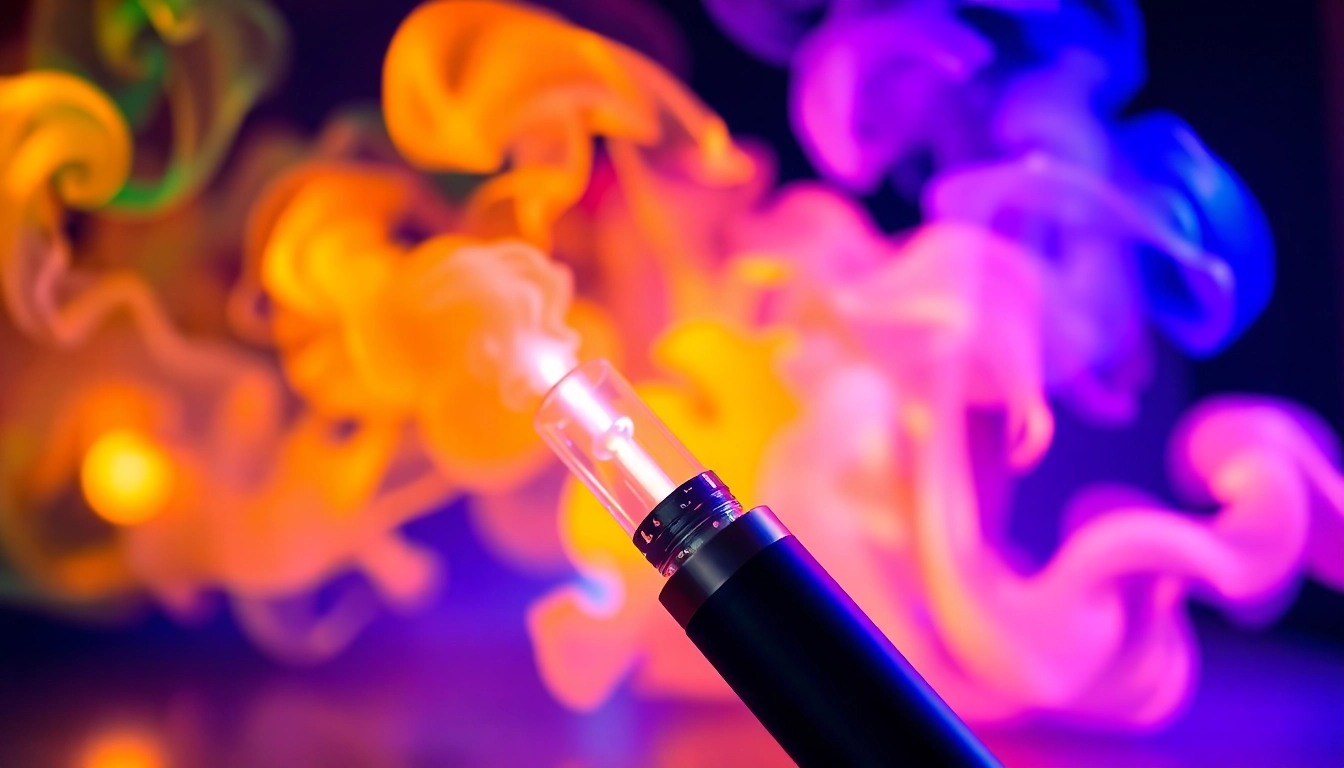Understanding E-cigarettes: Types, Components, and Functionality
The landscape of nicotine consumption has evolved significantly with the advent of e-cigarettes, often referred to as vapes. These devices have gained popularity not only among existing smokers seeking alternatives but also among newcomers drawn by their modern design and perceived reduced harm. E-cigarettes simulate the act of smoking traditional tobacco cigarettes by vaporizing a liquid, commonly known as e-liquid or vape juice, which usually contains nicotine, flavorings, and other chemicals. For those interested in exploring these devices, understanding their variety, core components, and operational mechanics is crucial. To begin your journey, consider visiting our comprehensive E-cigarette section to discover top products, tips, and updates.
Understanding E-cigarettes: Types, Components, and Functionality
Different Types of E-cigarettes and Their Features
Modern e-cigarettes come in a wide array of designs, catering to varying preferences, experience levels, and usage goals. The primary classifications include cig-a-likes, vape pens, box mods, and pod systems.
- Cig-a-likes: Resembling traditional cigarettes, these are small, lightweight devices often used by beginners. They typically have a fixed design, with disposable or refillable cartridges, making them simple and convenient.
- Vape Pens: Slightly larger with a sleek profile, vape pens offer improved battery life and vapor production. They are popular among intermediate users, providing more control over vaping experience.
- Box Mods: Known for their customizable features, large battery capacities, and advanced settings, box mods are preferred by experienced vapers seeking high vapor output and flavor customization.
- Pod Systems: Compact and user-friendly, pod systems combine portability with ease of use. They use replaceable or refillable pods and are especially popular for on-the-go vaping.
Each type offers unique advantages, from simplicity and discreetness to advanced personalization. Choosing the right model depends on your familiarity with vaping technology, desired vapor production, and lifestyle preferences.
Core Components: Atomizer, Battery, and Tank System
A successful e-cigarette relies on three key components working harmoniously:
- Atomizer: The atomizer houses the heating element, called a coil, which vaporizes the e-liquid. Its design and resistance influence vapor production, flavor, and throat hit.
- Battery: Providing the necessary power, the battery varies in capacity and voltage, affecting the device’s longevity and vapor output. Modern devices often include rechargeable lithium-ion batteries with safety features.
- Tank System: This container holds the e-liquid. It can be refillable or disposable, with adjustable airflow controls to modulate vapor density and flavor experience.
Understanding these components helps users troubleshoot issues and optimize performance, whether it’s adjusting airflow, replacing coils, or managing battery life for consistent vaping sessions.
How E-cigarettes Simulate Traditional Smoking
Unlike conventional cigarettes, which burn tobacco to produce smoke laden with tar and thousands of chemicals, e-cigarettes generate vapor by heating e-liquid. This process eliminates combustion, significantly reducing the emission of harmful substances. The vapor mimics the sensation, inhalation, and exhalation of cigarette smoke, offering a familiar experience to smokers transitioning away from traditional tobacco. The adjustable nicotine levels in e-liquids allow users to control intake, progressively decreasing nicotine dependency if desired. This simulation capability plays a vital role in harm reduction strategies and smoking cessation efforts.
Benefits and Risks of Using E-cigarettes
Potential Benefits for Smoking Cessation
E-cigarettes are often recognized as a tool in harm reduction and smoking cessation programs. They offer smokers a substitute that delivers nicotine without the tar, many carcinogens, and other toxins associated with combustible cigarettes. Studies have indicated that vaping can significantly increase the likelihood of quitting smoking, particularly when combined with behavioral support. The ability to customize nicotine levels and flavors also helps users gradually wean themselves off nicotine altogether.
In regions like the UK, health agencies endorse e-cigarettes as a safer alternative, emphasizing their potential to reduce smoking-related health risks. For more information, refer to resources such as the NHS guidance on using e-cigarettes to stop smoking.
Health Risks and Safety Concerns
Despite their advantages, e-cigarettes are not devoid of health concerns. Vapor inhalation exposes users to nicotine, which is highly addictive and can impact cardiovascular health. Additionally, some e-liquids contain flavoring agents and chemicals that may cause respiratory irritation or other adverse effects. There are also risks associated with device malfunctions, such as battery explosions or leaks of e-liquid, which can lead to injuries or exposure to harmful substances.
Research continues to evaluate long-term health effects, but current evidence suggests that while vaping is less harmful than smoking cigarettes, it is not entirely risk-free. Regulatory bodies worldwide are working to set safety standards and provide guidance to mitigate these risks effectively.
Regulatory and Legal Considerations
The regulatory landscape for e-cigarettes varies globally, reflecting differing health policies, cultural attitudes, and market dynamics. Many countries have enacted laws restricting sales to minors, regulating nicotine content, and imposing safety standards. The FDA in the United States, for example, oversees manufacturing and marketing, aiming to prevent youth access and ensure product safety.
Staying informed about local legislation is essential, especially for manufacturers and consumers, to ensure compliance and safety. For detailed regulatory updates, consult official government sources and reputable health organizations.
Choosing the Right E-cigarette for Your Needs
Assessing Your Vaping Experience Level
Beginners should prioritize simplicity and ease of use, opting for cig-a-likes or pod systems that require minimal maintenance. More experienced vapers seeking customization and higher vapor production may consider vape pens or box mods. Evaluating your familiarity with device operation, desired flavor intensity, and nicotine consumption goals will guide your selection process.
Popular E-cigarette Models and Their Advantages
Top models in each category have gained reputation for performance and reliability. For instance, the JUUL and Puff Bar are favored among newcomers for their compact design and straightforward operation. In contrast, devices like the SMOK Nord or Vaporesso Gen offer advanced features such as adjustable wattage, larger batteries, and extensive customization options for seasoned vapers.
Tips for Selecting Quality E-liquid and Accessories
Choosing high-quality e-liquids is vital for safety and flavor quality. Look for products from reputable brands that provide transparent ingredient lists, nicotine concentration options, and flavor profiles matching your preferences. Additionally, investing in authentic accessories like replacement coils, batteries, and cleaning tools ensures optimal device performance and longevity.
Best Practices for Safe Vaping
Proper Usage and Maintenance
Regular cleaning of your device, replacing coils when needed, and ensuring proper charging habits extend equipment lifespan and enhance safety. Follow manufacturer guidelines for assembly, usage, and troubleshooting to prevent malfunctions and leaks.
Storage and Handling of E-liquids
Store e-liquids out of reach of children and pets, preferably in a cool, dark place. Cap bottles tightly to prevent spills and degradation of flavor or chemicals. Always handle e-liquids with care, avoiding ingestion or skin contact, which can cause irritation or toxicity.
Understanding Nicotine Strengths and Limits
Determining the appropriate nicotine strength depends on your previous smoking habits and current tolerance. Beginners often start with higher concentrations (e.g., 18-24 mg/mL), gradually tapering down to lower levels (e.g., 3-6 mg/mL) to reduce dependency. Consult reputable resources or healthcare professionals for personalized guidance.
Future Trends and Innovations in E-cigarette Technology
Emerging Designs and Features
The industry is witnessing innovations such as device personalization, smarter automation, and advanced heating elements that improve flavor and vapor quality. SLEEKER, more environmentally friendly devices with recyclable components are increasingly being developed to meet consumer and regulatory needs.
Impact of Regulations on Product Development
Stricter regulations drive innovation towards safer, tamper-proof devices with transparent ingredient disclosures. Manufacturers are investing in research to develop nicotine delivery systems that reduce potential health harms while maintaining user satisfaction.
Environmental Sustainability and Vaping
Environmental concerns prompt efforts to decrease waste from disposable devices and e-liquid packaging. Developing biodegradable components and encouraging recycling programs contribute to the sustainability of vaping practices.




